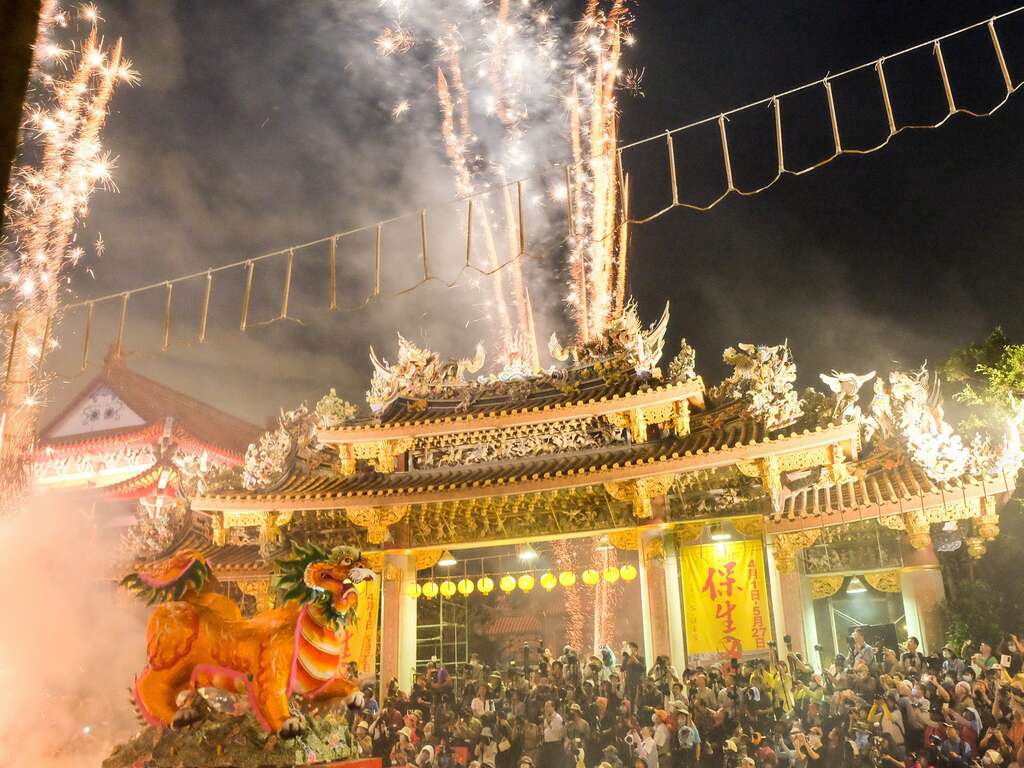Dalongdong Bao'an Temple Introduction
Dalongdong Baoan Temple was established in 1742 and rebuilt in 1805. The temple is dedicated to Baosheng Dadi and is commonly known as "Dalampeng Temple" or "Dadaogong Temple." It is a designated national historic site. Every year on the 15th day of the 3rd lunar month, a special event called the "Baosheng Cultural Festival" is held for two months to celebrate the birthday of Baosheng Dadi, which combines religious rituals, folk arts and crafts, historic site tours, arts and cultural studies, aesthetic competitions, family surname opera, processions, fire-walking, health care activities, and academic seminars. This festival is the grandest and most lively temple fair in northern Taiwan, making Dalongdong an important cultural center in the region. The decorative arts of Dalongdong Baoan Temple, including stone lions, dragon pillars, floral and avian motifs, cutout art, clay sculptures, Qing dynasty ceramics, wood carvings, and colored murals, are renowned artistic treasures, each possessing historical and artistic value. During its construction, craftsmen Guo Ta and Chen Yingbin were hired to create wood carvings, and this healthy competition was a popular practice at the time. Therefore, when appreciating the decorative arts of the temple, one can enjoy the works of different craftsmen on both sides. The seven murals in the main hall's corridor are the works of the national treasure-level painter Pan Lishui, attracting domestic and foreign tourists who marvel at their beauty. Dalongdong Baoan Temple has transformed from a local temple into a place that integrates religion, culture, education, and art, significantly impacting the revitalization of local culture in the Datong District of Taipei City. Particularly, the historic building and its restoration have drawn attention both domestically and internationally. Since its reconstruction, Baoan Temple has undergone multiple renovations, but due to its age and damage from wind, sun, and insects, the building has suffered significantly, affecting its original splendor and posing safety concerns. To preserve this cultural asset, the largest restoration project since the temple's rebuilding was carried out in 1995. Baoan Temple raised all funds independently and managed the project itself, becoming the first case of privately funded historic site restoration in the nation. The restoration won the UNESCO "2003 Asia-Pacific Heritage Conservation Award" and was designated as a national historic site in 2019. 44 Kan Street is located west of Baoan Temple on Hami Street, established in the 7th year of the Jiaqing reign (1802) and completed the following year. At that time, merchants Wang Zhi Ji and Chen Lan Ji invested to establish the "Jin Tong Cheng" business, building a row of twenty-two southern-style connected stores on this street. In Hokkien, a store is called a "kan," hence the name "44 Kan." Each shop is the same size, measuring seven and a half feet wide and has a depth of three sections with roofs over the water (courtyards), where the colonnades connect, forming a neat and uniform streetscape. Each end has a small gate to prevent theft, with "Xiao Yi Xuan Ge" written on the east and "Da Long Tong" written on the west. As the market prospered, development gradually moved westward towards "Nei Tu Di Gong" (He'an Temple), so the original 44 Kan Street became known as "Ding Street," and the new shops were called "Lower Street."
































